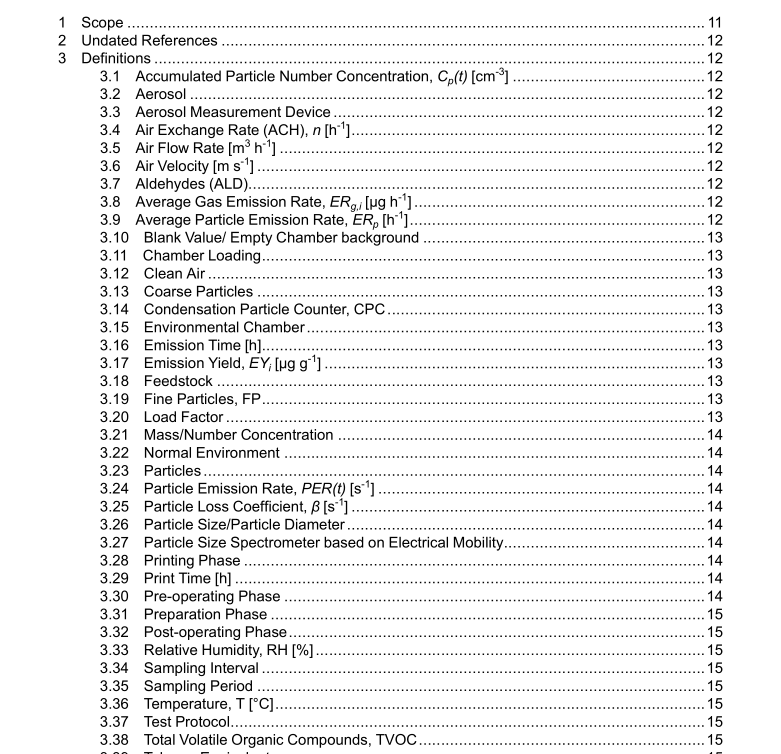UL 2904:2019 free download Standard Method for Testing and Assessing Particle and Chemical Emissions from 3D Printers
1 Scope
1.1 This standard presents methodologies for characterizing and quantifying coarse, fine, and ultrafine particles and volatile organic compound (VOC) emissions from operating three-dimensional (3D) printers under normal conditions of use in defined indoor environments including classroom, office, and residential scenarios.
1.2 This method primarily applies to the emissions of particles and volatile organic chemicals from 3D printers and feedstock which are widely used in classrooms, offices, libraries, residential settings, small and medium size enterprises, and other non-industrial indoor spaces. The 3D printers are operated with a variety of commercially available feedstock. For environmental chamber tests under controlled conditions, a 3D printer’s maximum size and format is limited. For measurements, it is required that environmental chamber conditions are known and can be kept stable at least during the measurement.
1.3 The measurement protocols may be used to
a) compare emissions from different feedstock or adhesion materials operated by a specific 3D printer, (material impact)
b) compare emissions from printing objects of different shape, design, and size on a specific 3D printer (printed object impact)
c) compare emissions from different 3D printers operated under identical conditions i. e. same object, same feedstock (print media), same environmental conditions (3D printer hardware impact)
d) quantify emissions in a given specific exposure scenario – e.g. workshop, small production line, etc. (environmental impact)
e) obtain data for use in risk assessments or product claims 1.4 This method includes requirements on laboratory quality management systems and measurement uncertainty estimation.
1.5 This standard establishes emissions criteria for particles and certain chemicals based on existing standards, guidelines, and research data for the management of airborne gaseous and aerosol pollutants in indoor environments.
1.6 This standard may be utilized as the basis for product testing and for certification/verification programs.
1.7 This standard specifies the maximum allowable concentrations of target chemicals and particles. However, this standard does not purport to address all of the safety, health, comfort (e. g., odor) and performance concerns, if any associated with its use. Users of this standard may establish additional safety, health, comfort and other performance conditions, and determine the applicability of regulatory requirements prior to use.
2 Undated References
Any undated reference to a code or standard appearing in the requirements of this Standard shall be interpreted as referring to the latest edition of that code or standard.
3 Definitions
3.1 Accumulated Particle Number Concentration, C p (t) [cm -3 ]
Time-dependent particle number concentration in a specified particle size range (at a minimum between 10 nm and 5 μm).
3.2 Aerosol
System of particles (solid and/or liquid) suspended in gas.
UL 2904:2019 free download
